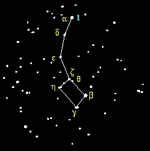
for New England
| IPM Home |
| About IPM
|
| About Polaris
|
| Ron Prokopy Tribute
|
| Bees in the Orchard
|
| Potato Leafhoppers and Fire Blight
|
| Weather Monitoring
|
| Members Only
|
| Links
|
| Honeybees, Bumblebees,Solitary Bees, and Others |
Most of you are aware of the disorder that has been affecting bees the past couple of years, and that the primary cause has been identified as a virus, called Israeli acute paralysis virus (IAPV). Colony Collapse is thought to be caused by several factors, which are still under investigation, including environmental stress, other parasites, and exposure to neonicotinoid insecticides. Penn State has been the focal point for research and outreach in the northeastern U.S.:
http://maarec.cas.psu.edu/ColonyCollapseDisorder.html
Other pollinators can also do a good job on our tree fruit crops. Native wild bumblebees are very active in the spring and are efficient pollinators of many crops. Commercial bumblebees are also available from several sources; http://www.koppert.com/ is one reputable source of bumblebees.
Another native species that is a highly efficient pollinator of apple is the blue orchard bee, Osmia lignaria. These do occur in the wild in our area, and can be encouraged by providing appropriate nesting sites (How to Manage the Blue Orchard Bee as an Orchard Pollinator by J. Bosch and W. Kemp http://www.sare.org/publications/bee/blue_orchard_bee.pdf ), or the bees themselves may be purchased from sites like this one: http://orchardbees.com.freeservers.com/bees/page3.html .
I was very interested in a presentation given at one of our research meetings this winter (2007) by Dr. David Biddinger of Pennsylvania State University. He and his colleagues were hoping to use wild bees as bio-indicators of pesticides, but what they actually found was that these pollinators occurred in large numbers and great diversity in orchards, pretty much regardless of spray program. The orchard ecosystems they studied had the highest number of bee species of any system studied – altogether they found 57 species of wild bees in orchards, some of which had not previously been seen in Pennsylvania (Update: further work in 2008 brought the number up to about 80 species). Note that this survey was only covered bees – there are even more species of wasps, flies, and pollinators. This confirms my belief (partly based on the variety of critters we catch on the white sawfly traps, unfortunately!) that we have a much greater diversity of pollinating insects than a lot of people realize. Probably not enough to cancel your annual bee order if you’re a commercial apple grower, but interesting to know! http://www.ars.usda.gov/research/publications/publications.htm